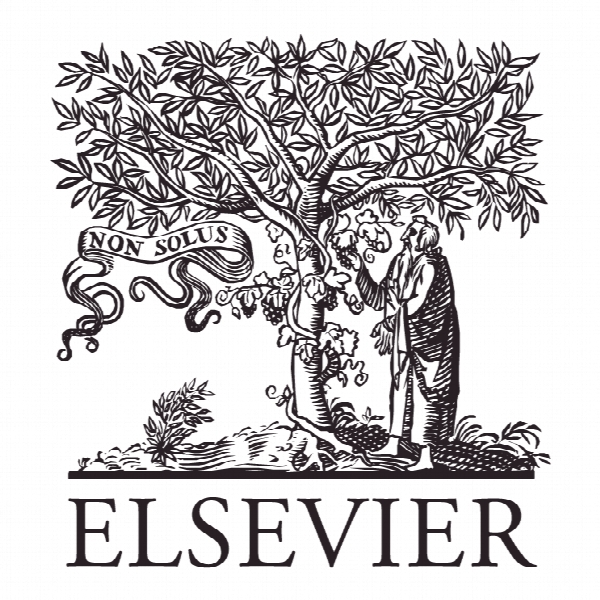تاثیر نگرش برند و eWOM بر تمایل مصرف کنندگان برای پرداخت در صنعت بانکی: نقش میانجی از شناسایی برند مصرف کننده و ارزش ویژه برند Effects of brand attitude and eWOM on consumers’ willingness to pay in the banking industry: Mediating role of consumer-brand identification and brand equity
- نوع فایل : کتاب
- زبان : انگلیسی
- ناشر : Elsevier
- چاپ و سال / کشور: 2018
توضیحات
رشته های مرتبط مدیریت
گرایش های مرتبط بازاریابی
مجله خدمات خرده فروشی و مصرف کننده – Journal of Retailing and Consumer Services
دانشگاه Institute of Systems and Robotics – University of Coimbra – Portugal
منتشر شده در نشریه الزویر
کلمات کلیدی انگلیسی Willingness to pay, EWOM, Banking industry, Consumer-brand identification, Consumer-based brand equity, Brand attitude
گرایش های مرتبط بازاریابی
مجله خدمات خرده فروشی و مصرف کننده – Journal of Retailing and Consumer Services
دانشگاه Institute of Systems and Robotics – University of Coimbra – Portugal
منتشر شده در نشریه الزویر
کلمات کلیدی انگلیسی Willingness to pay, EWOM, Banking industry, Consumer-brand identification, Consumer-based brand equity, Brand attitude
Description
1. Introduction The banking industry is facing many challenges. The industry is considered highly competitive, complex and dynamic (Beerli et al., 2004). In this context, adding value through differentiation is seen as a key consideration (Devlin, 2000). However, the differentiation level of financial services and products is very low, and banks have fallen to the level of utility providers (Ferguson and Hlavinka, 2007; Foo et al., 2008). Furthermore, financial services are highly intangible in terms of consumer cognition (Devlin, 2000). Therefore, consumers need to evaluate and validate the service prior to consumption (Grönroos, 1990). Hence, options for adding value may be limited due to customer reliance on experience and credence qualities during the purchase decision (Beerli et al., 2004; Devlin, 2000). Nowadays, people often rely on online comments from other people to gather information and reduce their level of uncertainty (Ye et al., 2011). Thus, electronic wordof-mouth (eWOM) may have strategic importance for banks. The ultimate goal of retail bank marketers is to build profitable relationships with customers, and, as in most relationships, communication is key to success (Ferguson and Hlavinka, 2007). Word-ofmouth has become much more important to influence consumer behavior, compared to other forms of marketing communications, such as advertising (Alam and Yasin, 2010), which are losing their effectiveness (Trusov et al., 2009). Moreover, the digitalization and the advent of social media platforms have changed both customers’ behavior and expectations, and banks must alter and manage their interactions with their customers to keep up. On the one hand, banks face the threat of competition from customer-focused tech companies, such as Amazon, which may be better prepared to understand rapid customer behavioral changes. On the other hand, advances in technology constitutes an opportunity for banks, not only to reduce costs, but also to better understand their customers and to build stronger relationships with them, which will enable the development of new products. For complex services, image and reputation have a significant importance in adding value to one’s offering (Devlin, 2000). However, in spite of the recognized importance of building strong brands (e.g., de Chernatony et al., 2011; Aaker, 1995), banks have in general a negative brand perception (Ferguson and Hlavinka, 2007). The recent financial crisis has further damaged stakeholders’ perceptions of banks (Bravo et al., 2016). Nevertheless, the brand plays a central role in establishing banks value. Moreover, banks are under pressure to increase service charges, in order to restore their operating profitability, but bank customers have a considerable aversion to price increases and they may switch banks as a result of these actions (Deloitte, 2013). Nevertheless, customers would be willing to pay more for a brand that offers unique benefits (Priem, 2007). The more a customer values a brand, the more he or she will be willing to accept a price increase (Aaker, 1991). Thus, willingness to pay a premium price (WTPp) signals the power of brand. In fact, WTPp can be a better indicator of brand success, rather than actual purchase behavior, because the time gap between intention and actual behavior opens the door to the influence of external factors. Customers that exhibit WTPp not only have lower sensitivity to price changes, but they are also more likely to maintain their relationships with their current service (Keh and Xie, 2009). According to Beerli et al. (2004), customer retention, which is considered one of the key factors to increase retail banks revenue, is better explained by customers’ evaluation of the value they received, rather than from switching costs.


